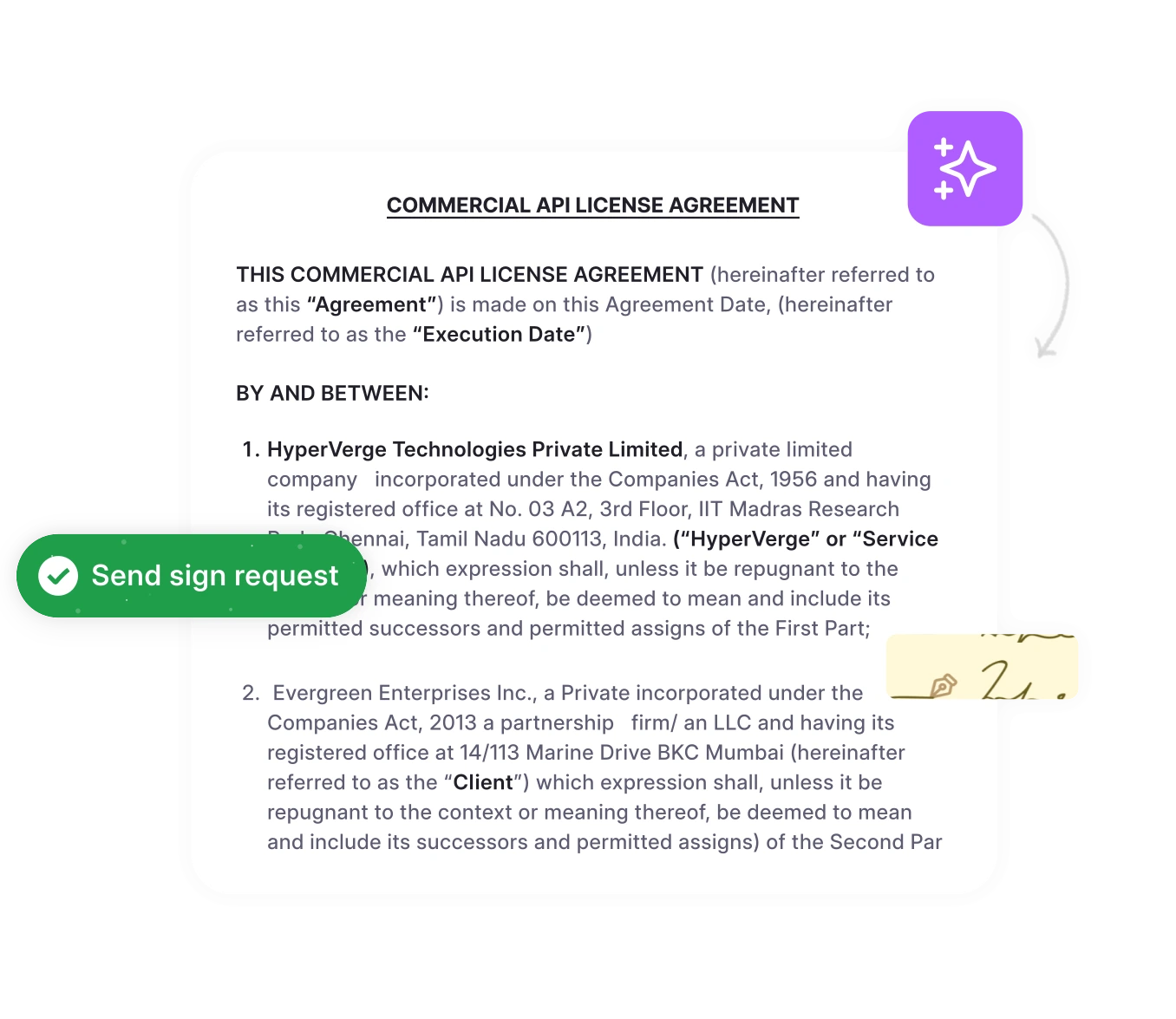As businesses increasingly rely on contracts to establish partnerships and clarify obligations, legal teams are overwhelmed with managing numerous agreements.
And if those contracts aren’t managed properly, things can get chaotic. World Commerce & Contracting tells us that companies lose a whopping 9% of their yearly earnings just from contract mishaps – missed deadlines, hidden clauses, the works. It’s a recipe for trouble, from fines and penalties to strained business relationships.
Now, for in-house legal teams, mastering contract management practices is both essential and beneficial. Failing to do so can lead to a cascade of issues.
Consider a situation where a company fails to renew a critical supplier contract due to disorganized documentation. This oversight could lead to a disruption of services, increased costs, and damage to the company’s reputation. Such scenarios are not uncommon and serve as a reminder that the implications of these oversights can be dire, resulting in costly penalties and harm to a company’s standing in the industry.
So, what can we do about it? This blog guides you through the essential components of legal contract management.
Let’s go by the definition first.
What is legal contract management?
Legal contract management refers to the systematic process of handling legal agreements throughout the entire lifecycle of a contract, ensuring compliance with legal obligations and regulations. This includes drafting, reviewing, negotiating, executing, and managing contracts, monitoring their performance, and providing timely renewals.
At its core, contract management helps reduce risks, ensures contracts’ administrative efficiency, and keeps everything transparent. It’s a crucial part of the day-to-day work of in-house legal teams, ensuring the business runs smoothly and avoiding unnecessary risks.
When contracts aren’t managed properly, you might face problems like lost data, delayed deals, or costly mistakes from compliance risks. With legal teams often expected to do more with fewer resources, having an efficient system is essential. And that system is nothing other than legal contract management software, which helps streamline and automate the entire process.
Want to know more about contract lifecycle management software? Here is a complete guide about CLM, including its meaning, benefits, and features. So let’s understand first the elements that form a contract.
What are the basic elements that form a contract?
When drafting a contract, several fundamental elements must be considered to ensure its effectiveness and enforceability. These elements generally fall into three main categories: scope, key information, and format.
Scope: The scope of a contract outlines the core requirements and obligations of the parties involved. It defines what the contract is meant to achieve, detailing the responsibilities, deliverables, or services. Clearly defining the scope helps avoid misunderstandings and ensures that all parties know what they are committing to.
Key information: Contracts also need to include specific details that ensure clarity and protect both parties. Key information typically encompasses:
Approvals necessary for the contract’s execution
The history and relevant background of the parties involved
Timeframes, deadlines, and milestones
Procedures for termination or handling breaches
Any additional clauses that address contingencies, warranties, or indemnities
Format: The structure of a contract varies based on the type of agreement, but having a consistent format is essential. Many organizations benefit from pre-approved templates, especially for common types of contracts like service level agreements (SLAs) or non-disclosure agreements (NDA).
Templates ensure that vital information is captured and the format remains uniform across various agreements, speeding up the process and reducing errors.
Contract disharmony with the legal team?
Contract in harmony with legal and between departments. Focus on contract KPIs, not contract admin. Only with HyperStart CLM.
What are the key stages of the contract lifecycle management
In legal contract management, contract lifecycle management involves several structured stages to ensure a contract is properly created, executed, and maintained. Each stage plays a crucial role in reducing risks, ensuring compliance, and driving value for the business. Here’s an overview of the key stages:
Stage 1: Contract creation and drafting
Stage 2: Contract negotiation
Stage 3: Contract approval
Stage 4: Contract execution
Stage 5: Contract storage and retrieval
Stage 6: Contract compliance and performance monitoring
Stage 7: Contract amendments and modifications
Stage 8: Contract renewal or termination
These stages ensure that contracts are efficiently managed throughout their lifecycle, reducing risks and ensuring legal compliance.
What are the challenges in managing legal contracts?
Managing legal contracts comes with its own set of hurdles. Here are the 7 most common challenges organizations face in this critical area:
1. Contracts are scattered across various systems
We’ve all experienced that frustrating moment when you can’t locate an important document. Many organizations face a similar issue when their contract data is dispersed across different systems.
Without a centralized platform, effectively tracking, reviewing, and managing contracts is challenging. This scattered approach leads to missed obligations and compliance issues, making implementing a unified contract management system vital.
2. Unclear roles and responsibilities, bottlenecks in the approval process
Have you ever had a contract stuck in limbo because nobody could figure out who was supposed to sign it? This is a common issue for many organizations, and it often happens when roles and responsibilities aren’t clear.
Bottlenecks in the contract approval workflows cause frustrating delays. Streamlining these workflows and clarifying who’s responsible for what speeds things up and keeps contracts moving.
3. Difficulty in tracking and managing different versions of contracts
Keeping track of the correct versions of contracts is vital for legal and operational integrity. Many organizations struggle with this and often end up working from outdated or incorrect versions of contracts. This leads to confusion and even legal risks if obligations are misunderstood.
4. Inconsistent templates and clauses, leading to confusion and errors
Organizations must use standardized templates and clauses to ensure the contracting process is smooth and consistent. Legal teams often conduct extensive reviews without a uniform approach, heightening the risk of errors and inefficiencies. Unnecessary legal jargon or misaligned terms can confuse parties and potentially lead to disputes.
5. Overlooking important deadlines and obligations
When organizations don’t have an effective system for tracking contracts, critical dates for renewals or obligations slip through the cracks. This leads to missed opportunities and even breaches of contract.
6. Contracts becoming less relevant or obsolete over time
As contracts age without proper management, relevance, value, and visibility diminish. Changing business needs, market conditions, or regulatory requirements may render existing contracts useless or obsolete.
Additionally, mismanagement leads to disputes or misunderstandings about contractual obligations. Regularly reviewing and updating contracts to reflect current business circumstances and ensuring they align with organizational goals help maintain their value, relevance, and transparency over time.
7. Limited human and technological resources for contract management
Many organizations need to be more balanced when it comes to resources. These constraints challenge effective contract management, whether it’s a lack of staff or inadequate technology.
Legal teams may become overwhelmed with contract requests, leading to mistakes or oversight.
Struggling with the financial implications of legal contracts?
HyperStart CLM helps you define contracts clearly, minimizing costs and preventing revenue leakage.
How contract management software can help manage legal contracts easily?
Contract management software is a tool for corporate legal departments looking to boost efficiency, improve collaboration, and manage risks more effectively.
Here’s how it helps legal teams:
1. Automate your way to efficiency
Drafting, reviewing, and approving contracts take up a huge chunk of time. With a contract management platform, many of these repetitive tasks are automated. This speeds up negotiations and helps cut down on payment errors by 75-90%. That means you can close deals faster and with fewer headaches. This is a prime example of legal automation in action, which you can learn more about in our detailed guide on automating legal tasks like contract creation, document review, compliance checks, and case management.
2. Centralized access for easy management
Instead of looking through countless folders or email chains for a contract, a contract management system keeps everything in one spot. This makes it super easy to find and manage documents, reducing the risk of misplacing important contracts and allowing for quick access when you need them most.
3. Streamlined workflows for seamless collaboration
A CLM automates contracting workflows, meaning tasks quickly move between legal, procurement, and finance teams. This ensures that contracts progress smoothly through the approval process, reducing delays and making communication easier.
4. Stay informed with real-time updates
With dashboards showing the real-time status of contracts, everyone stays in the loop. This transparency helps prevent any miscommunication and keeps all parties engaged throughout the entire lifecycle of the contract.
5. Compliance made easy
For legal teams, staying compliant is key. CLMs help monitor how well contracts meet their obligations and regulatory requirements, reducing the risk of penalties or disputes down the line.
6. Version control for clarity and accuracy
Contracts often go through many revisions. With a CLM, you easily track changes and amendments, ensuring you always know what the latest version looks like while keeping track of the original terms.
7. Harness analytics for better decision-making
CLMs come with powerful reporting tools that let you analyze contract performance. This data can help you spot cost-saving opportunities and improve your negotiation outcomes, ensuring you get the best possible deals.
8. Leverage historical insights for future success
Having access to past contracts and vendor performance data means you make more informed decisions in future negotiations. This insight leads to significant cost savings and better contract terms.
9. Timely reminders for stronger client relationships
With automated reminders for renewal dates and obligations, you’ll never miss a deadline again. This timely execution builds trust and strengthens your relationships with clients.
10. Transparency that builds trust
Keeping clients updated throughout the contract lifecycle shows that you’re reliable and professional. This transparency goes a long way in building long-term partnerships.
Transform your legal contract management process with Hyperstart CLM
Contract management software like HyperStart CLM makes managing contracts simple and stress-free. It streamlines every step from drafting to signing by automating workflows and helping legal teams avoid common issues like missed deadlines or overlooked clauses.
HyperStart CLM serves as a comprehensive solution for managing the entire contract lifecycle. Draft, negotiate, approve, and sign contracts all in one place.
Implementing HyperStart CLM is fast and straightforward. You can establish a digital contract repository in as little as 2-7 days, and workflow automation can be operational within just 2-3 weeks, allowing your organization to reap the benefits almost immediately.
With no-code templates, contracts can be generated quickly and accurately. Hyperstart’s AI-driven system ensures 99% accuracy and full compliance, accelerating the drafting process and significantly reducing errors.
Real-time collaboration tools enable multiple stakeholders to work together seamlessly. With the ability to edit and comment in a shared space, negotiations are faster, cutting down redlining time by up to 75%.
HyperStart CLM maintains detailed audit trails and version control, providing transparency and accountability throughout the contract lifecycle.
Sends automated notifications for contract renewals and expirations, helping your organization stay compliant and avoid potential penalties.
With enterprise-level security features, end-to-end encryption, SOC Type 2, and ISO certifications, HyperStart CLM ensures that your sensitive contract data remains protected.
So, with HyperStart CLM, make contract worries a thing of the past. Book a demo today and learn how our solution can simplify every step of your contract lifecycle.












